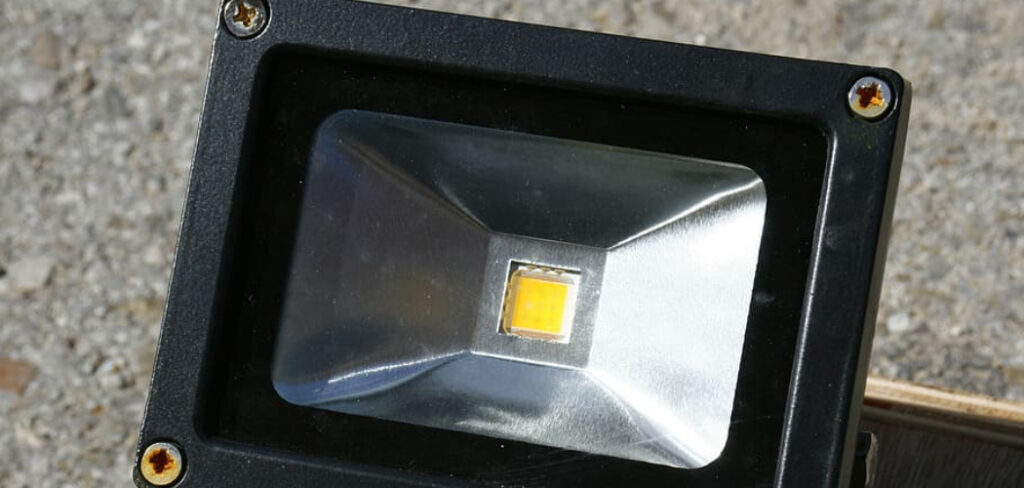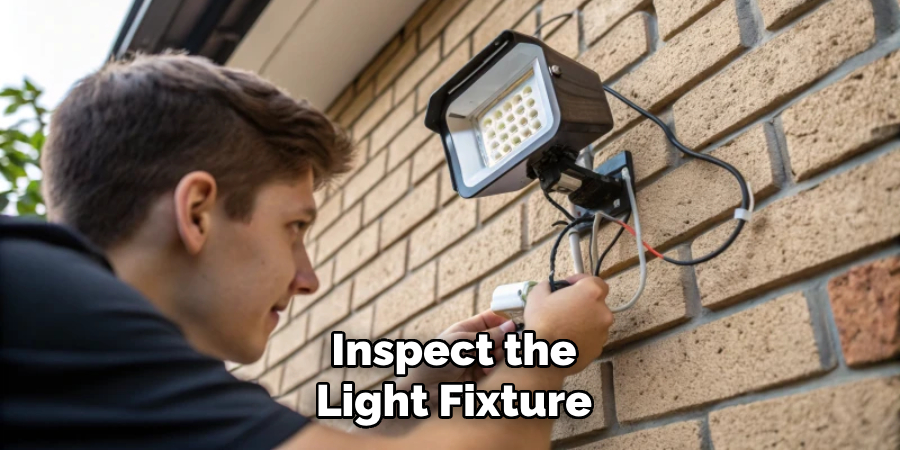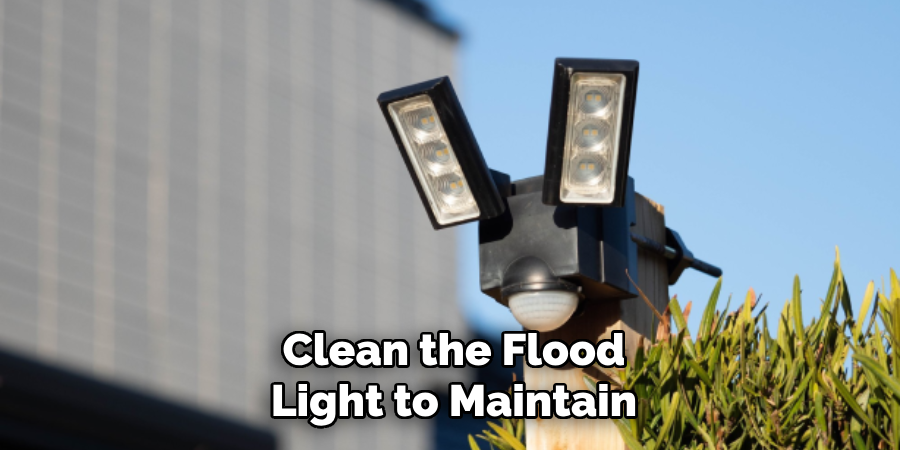Flood lights are essential for outdoor spaces, providing security, illumination, and enhancing landscaping. However, a flickering flood light can be both frustrating and concerning. It may reduce visibility, create an unsteady ambiance, and indicate underlying electrical problems.

Flickering flood lights can stem from various issues, such as faulty wiring, a defective bulb, power supply inconsistencies, or environmental factors. Ignoring these signs may lead to complete light failure or even pose electrical hazards.
This article provides a comprehensive guide on how to fix a flickering flood light effectively and ensure a safe and efficient repair process that saves time and money.
Understanding the Causes of Flickering Flood Lights
Flickering flood lights can be caused by several factors. Bulb issues such as a loose or improperly fitted bulb, or a burnt-out bulb, are common culprits. Power supply problems, including voltage fluctuations, power surges, or an inconsistent supply from the electrical panel, can also cause flickering.
Wiring issues, like loose connections, corroded terminals, or damaged wires, may lead to interruptions. Sensor problems with motion-activated lights, such as malfunctioning sensors or environmental interference (e.g., dirt or weather), can cause irregular flickering.
Lastly, circuit or switch problems, including a faulty light switch or tripped circuit breaker, can be factors. Diagnosing the cause involves observing flickering patterns, checking for visible damage, and considering whether the flickering occurs under specific conditions or times.
Safety Precautions Before Fixing a Flickering Flood Light
Turn Off the Power
- Always switch off the flood light and its circuit breaker to prevent electric shocks.
- Use a voltage tester to confirm the fixture is not live.

Use Proper Tools and Gear
- Work gloves to prevent injuries from sharp edges.
- Safety glasses to protect eyes from debris.
- Ladder or step stool for reaching high-mounted flood lights.
7 Easy Steps on How to Fix a Flickering Flood Light
Flood lights are essential for outdoor security and illumination, but flickering issues can reduce their effectiveness. A flickering light can be caused by a variety of factors, including a faulty bulb, wiring issues, sensor malfunctions, or power supply problems. This guide provides a step-by-step method to diagnose and resolve the issue efficiently.
Step 1: Turn Off the Power and Remove the Bulb
Before starting any troubleshooting, prioritize safety by cutting off power to the flood light. Locate the switch and turn it off, then shut off the circuit breaker that controls the fixture. This step prevents potential electrical hazards.
Since flood lights tend to generate a significant amount of heat, wait a few minutes to allow the bulb to cool down before handling it. Once it has cooled, carefully unscrew the bulb from the socket. Inspect it closely for any visible signs of damage, such as cracks, dark spots, or burn marks, which may indicate that the bulb needs replacing.
Step 2: Inspect the Bulb
A loose or defective bulb is one of the most common causes of flickering. Check if the bulb is properly screwed into the socket. A loose connection can interrupt the electrical flow, causing intermittent lighting. If the bulb is securely in place but still flickers, inspect it for any physical damage or signs of wear.
If the bulb appears damaged, replace it with a new one that matches the recommended wattage and type for your fixture. Even if the bulb looks intact, swapping it for a new one can help determine if the flickering is due to a faulty bulb or another underlying issue.
Step 3: Inspect the Light Fixture

If replacing the bulb does not resolve the flickering, the problem may be within the fixture itself. Inspect the flood light housing and socket for corrosion, rust, or accumulated debris, as these can interfere with proper electrical contact.
Look for any discoloration or burn marks in the socket, as this could indicate overheating or an electrical fault. Tighten any loose screws or mounting brackets, as a shaky fixture may cause flickering due to unstable wiring connections.
Step 4: Verify the Power Supply
A flickering flood light may be an indication of an unstable power supply. Begin by checking the circuit breaker to ensure it has not tripped. If it has, reset it and observe whether the flickering persists. Use a voltage tester to measure the electrical supply to the fixture.
Fluctuating voltage levels can be a sign of a larger electrical problem, such as an overloaded circuit or faulty wiring in your home. If other appliances or lights in your home are also experiencing issues, it may be best to consult an electrician to address potential wiring concerns.
Step 5: Inspect the Motion Sensor
For flood lights with motion sensors, a malfunctioning sensor can be the source of flickering. Dirt, dust, or moisture accumulation on the sensor can interfere with its proper operation. Clean the sensor lens using a soft cloth to remove any obstructions.
Adjust the sensitivity settings according to your needs, as overly high sensitivity can cause the light to flicker due to frequent or false triggers. Test the sensor by walking past it and monitoring its response. If the light continues to flicker inconsistently, consider replacing the sensor or consulting an expert.
Step 6: Check the Wiring and Connections
Faulty wiring can lead to inconsistent power flow, which results in flickering. Before inspecting the wiring, turn off the power once again to avoid electrical shock. Carefully detach the flood light fixture from its mounting and examine the wiring connections.
Look for frayed wires, loose connections, or corroded terminals. If any wires appear damaged, replace them with new ones. Secure all wire nuts and connection points using a screwdriver. Ensuring tight and secure wiring helps maintain a stable electrical connection and prevents flickering caused by power fluctuations.
Step 7: Reassemble and Test the Light Fixture
Once all inspections and necessary repairs have been completed, reassemble the flood light. Securely mount the fixture back into place and insert a functional bulb. Restore power by switching on the circuit breaker and turning on the light switch.
Observe the flood light to check if the flickering issue has been resolved. If the light now functions properly, routine maintenance such as cleaning, inspecting connections, and replacing bulbs as needed can help prevent future issues. However, if the flickering persists despite all troubleshooting efforts, it may be necessary to seek professional help to diagnose potential electrical faults within your home’s wiring.

Troubleshooting Persistent Flickering
Replace the Light Switch
- If flickering persists, replace the switch.
- A faulty switch can cause intermittent power loss.
Consider Using a Higher-Quality Bulb
- Low-quality bulbs may flicker more often.
- Use LED or high-quality halogen bulbs.
Check for Electrical Overload
- Shared circuits with multiple devices may overload power distribution.
- Distribute loads evenly or consult an electrician.
Inspect the Electrical Panel
- Voltage fluctuations from the panel can cause flickering.
- A professional inspection may be needed to detect panel faults.
When to Call a Professional Electrician
Serious Wiring Problems
- Exposed or damaged wires may require expert handling.
Persistent Flickering
- If issues persist despite troubleshooting, an electrician can assess the root cause.
Safety Concerns
- If unsure about electrical repairs, hiring a licensed electrician ensures safe handling.
Preventative Measures and Maintenance
Regular Inspection of Flood Lights
- Periodically check for damage, dirt buildup, and loose connections.
- Clean bulbs and fixtures to maintain optimal brightness.
Use Quality Light Bulbs
- Invest in durable bulbs rated for outdoor use.
- LED bulbs offer energy efficiency and longevity.

Electrical System Maintenance
- Schedule professional checks to prevent electrical failures.
- Upgrade aging wiring if necessary.
Install Surge Protectors
- Protect flood lights from power surges and voltage fluctuations.
Frequently Asked Questions
Q: What’s the best way to fix a flickering flood light switch?
Ans: Test the switch for faults, and check for loose connections. If the switch is faulty or worn out, replacing it with a new one can resolve the flickering.
Q: Can a tripped circuit breaker cause flickering in flood lights?
Ans: Yes, a tripped circuit breaker interrupts the power supply to your lights, which can cause flickering. Reset the breaker and ensure the circuit is functioning properly.
Q: Is it safe to continue using a flickering flood light?
Ans: If the flickering is caused by wiring issues or faulty components, it could be unsafe. Turn off the light and repair or replace the damaged parts as soon as possible.
Q: How can I prevent my flood lights from flickering in the future?
Ans: Regularly maintain your lights by checking bulbs, wiring, and sensors. Ensure proper installation and replace worn-out components to prevent future flickering.
Q: Can environmental factors cause flood lights to flicker?
Ans: Yes, factors like extreme temperatures, humidity, or rain can affect wiring, sensors, or connections, leading to flickering. Ensure the fixture is weatherproof and properly maintained.
Conclusion
A flickering flood light can be a nuisance and a sign of potential electrical issues. Understanding the common causes, taking safety precautions, and following a step-by-step repair guide can help resolve the problem efficiently.
Regular maintenance, using quality bulbs, and monitoring the electrical system can prevent future flickering issues. While many solutions can be DIY, complex electrical problems should be handled by professionals.
By taking these steps, you can ensure that your flood lights function reliably, providing bright and stable illumination for your outdoor space.
